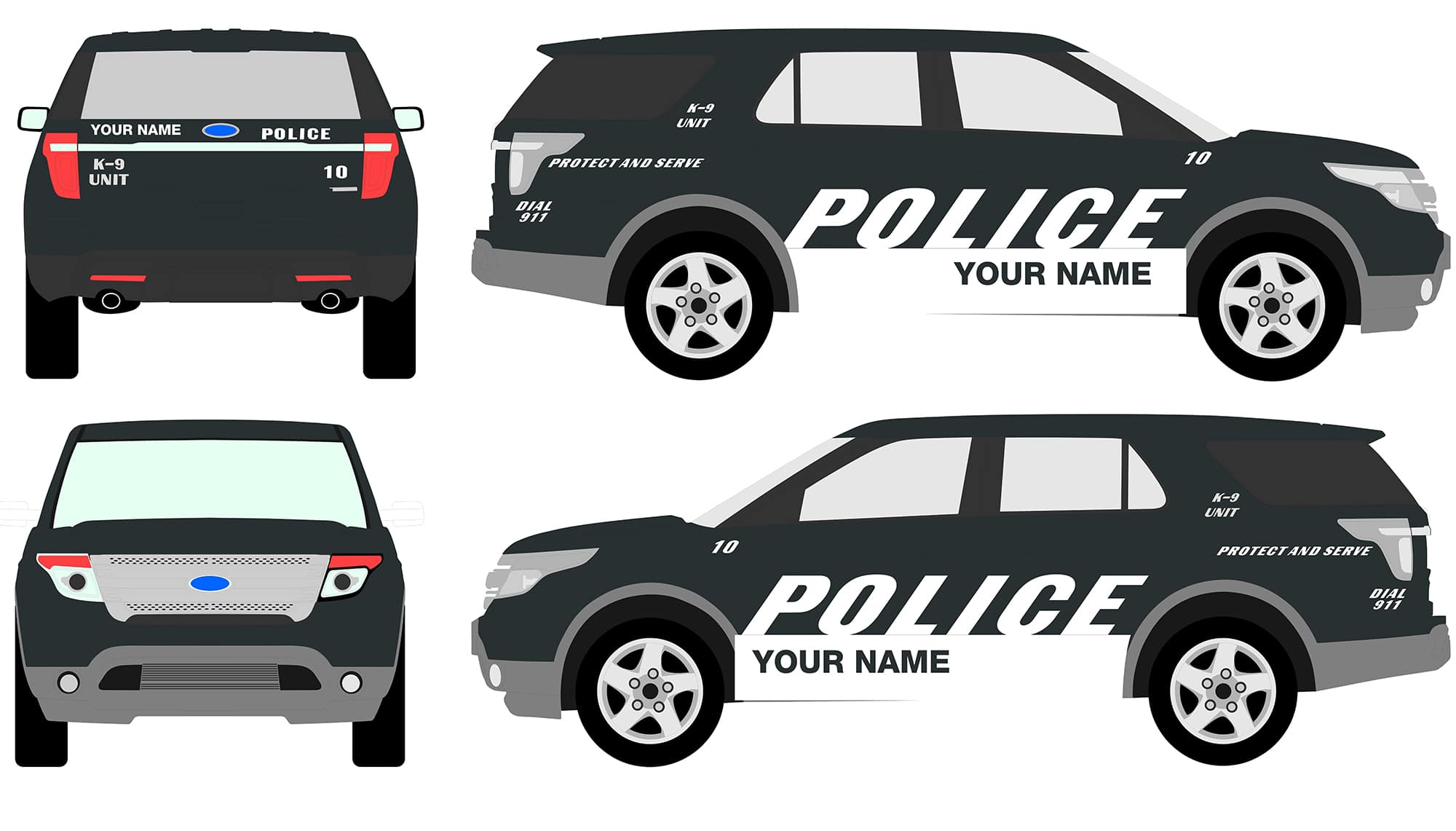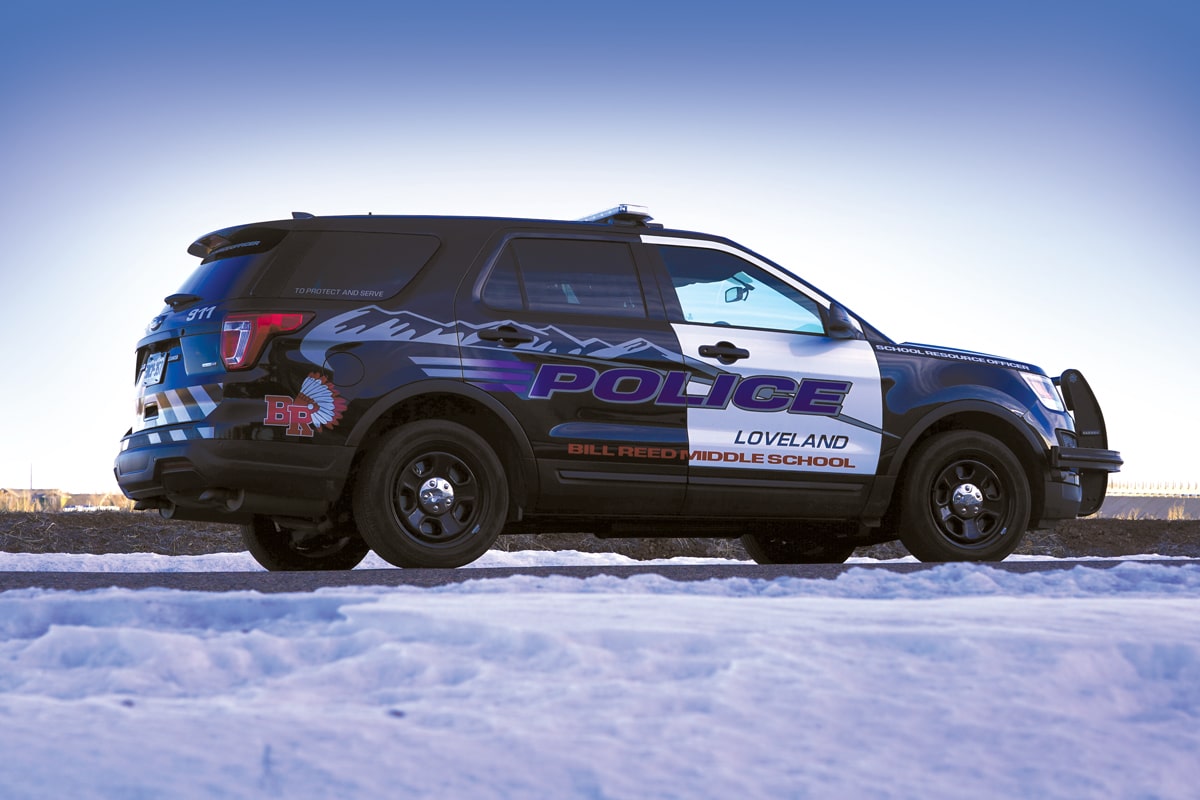Law Enforcement Vehicle graphics: A Comprehensive Guide
Law enforcement vehicles are more than just modes of transportation; they are mobile symbols of authority, community presence, and public safety. Their visual appearance plays a crucial role in how they are perceived by the public. Effective vehicle graphics are essential for clear identification, maintaining a professional image, and promoting positive community relations. This comprehensive guide delves into the various aspects of law enforcement vehicle graphics, from design principles to material selection and best practices.
The Importance of Effective Vehicle Graphics
Public Perception and Image

Law enforcement vehicles are constantly in the public eye. Their graphics contribute significantly to the agency’s image. A well-designed, professional-looking vehicle conveys competence, authority, and trustworthiness. Conversely, poorly designed or outdated graphics can project an unprofessional or even intimidating image. Clear, concise messaging and a visually appealing design are crucial for fostering positive public perception.
Identification and Visibility
One of the primary functions of law enforcement vehicle graphics is immediate identification. In emergency situations, it’s vital that citizens can quickly recognize law enforcement personnel. Reflective materials and bold lettering ensure high visibility, even at night or in adverse weather conditions. This quick identification is crucial for officer safety and effective response.
Community Relations

Law enforcement agencies are increasingly focused on building strong relationships with the communities they serve. Vehicle graphics can play a role in this effort. Incorporating community-oriented messages or branding can help foster a sense of partnership and approachability. A less militaristic and more community-focused design can contribute to a more positive interaction between law enforcement and the public.
Design Principles for Law Enforcement Vehicle Graphics
Clarity and Legibility
The most important aspect of any law enforcement vehicle graphic is clarity. The agency’s name, motto, and other essential information must be easily readable from a distance. Use a clear, bold font that contrasts well with the vehicle’s base color. Avoid overly ornate or complex fonts that can be difficult to decipher.
Simplicity and Conciseness
Keep the design simple and avoid clutter. Too much information can overwhelm the viewer and make it difficult to quickly identify the vehicle. Focus on the most critical information and present it in a concise and visually appealing manner.
Professionalism and Consistency
The design should reflect the professionalism of the law enforcement agency. Maintain consistency in branding across the entire fleet. This includes using the same fonts, colors, and logos on all vehicles. A consistent visual identity reinforces the agency’s image and strengthens public recognition.
Reflectivity and Visibility
Law enforcement vehicles must be highly visible, especially at night. Reflective materials are essential for ensuring that the vehicle can be easily seen in low-light conditions. Consider using reflective lettering, striping, and other design elements to enhance visibility and safety.
Color Schemes and Contrast
The color scheme should be carefully chosen to ensure high contrast and visibility. Consider the base color of the vehicle and select graphics colors that stand out. Avoid using colors that blend in with the vehicle’s background. Traditional black and white remains a popular choice for its high contrast and professional look. However, many agencies are moving towards more modern color schemes.
Material Selection for Law Enforcement Vehicle Graphics
Vinyl Wraps
Vinyl wraps are the most popular choice for law enforcement vehicle graphics. They offer a durable, long-lasting, and versatile solution. Vinyl wraps can be custom printed with any design, including complex graphics and photographs. They also protect the vehicle’s paint from scratches and fading.
Reflective Materials
Reflective materials are crucial for nighttime visibility. They reflect light back to the source, making the vehicle highly visible in low-light conditions. Several types of reflective materials are available, each with different levels of reflectivity.
Laminates
Laminates are applied over the vinyl wrap to protect it from scratches, UV damage, and other environmental factors. They also enhance the gloss and durability of the graphics.
Specialty Finishes
Specialty finishes, such as matte or textured finishes, can be used to create a unique look. However, they may be more expensive and require special care.
Installation and Maintenance of Law Enforcement Vehicle Graphics
Professional Installation
Professional installation is essential for ensuring a high-quality and long-lasting finish. Experienced installers have the knowledge and tools to properly apply the graphics and avoid bubbles, wrinkles, and other imperfections.
Cleaning and Care
Regular cleaning and care are essential for maintaining the appearance and longevity of the vehicle graphics. Use mild soap and water to wash the vehicle and avoid using harsh chemicals or abrasive cleaners.
Repair and Replacement
Over time, vehicle graphics may become damaged or faded. Professional repair or replacement is necessary to maintain the vehicle’s appearance and ensure that the graphics remain clear and legible.
Legal Considerations for Law Enforcement Vehicle Graphics
Regulations and Standards
Several regulations and standards govern the design and use of law enforcement vehicle graphics. These regulations vary by jurisdiction and may address issues such as color schemes, lettering size, and reflectivity.
Trademark and Copyright
Law enforcement agencies must ensure that their vehicle graphics do not infringe on any trademarks or copyrights. It’s essential to obtain permission before using any logos, images, or other copyrighted material.
Best Practices for Law Enforcement Vehicle Graphics
Community Input
Involving the community in the design process can help build trust and foster positive relationships. Solicit feedback from community members on proposed designs and incorporate their suggestions where possible.
Regular Review and Updates
Vehicle graphics should be reviewed and updated regularly to ensure that they remain relevant and effective. Outdated or faded graphics can project an unprofessional image.
Documentation and Record Keeping
Maintain accurate records of the design, materials, and installation of all vehicle graphics. This information can be useful for future maintenance and replacement.
Collaboration with Graphics Professionals
Working with experienced graphics professionals is essential for creating high-quality and effective vehicle graphics. Professionals can provide valuable guidance on design, material selection, and installation.
The Future of Law Enforcement Vehicle Graphics
Technological Advancements
Technological advancements are constantly changing the landscape of vehicle graphics. New materials, printing techniques, and design software are making it possible to create even more innovative and effective graphics.
Data Visualization and Integration
Integrating data visualization and other technologies into vehicle graphics could provide valuable information to officers in the field. For example, real-time crime data or suspect information could be displayed on the vehicle’s exterior.
Interactive Graphics
Interactive graphics could allow citizens to access information about the law enforcement agency or report crimes directly from the vehicle.
Conclusion
Law enforcement vehicle graphics are a critical component of an agency’s image and public perception. Effective graphics contribute to clear identification, promote professionalism, and foster positive community relations. By adhering to design principles, selecting appropriate materials, and following best practices, law enforcement agencies can ensure that their vehicle graphics are a valuable asset. As technology continues to advance, the future of law enforcement vehicle graphics promises even more innovative and effective solutions.
law enforcement vehicle graphics
